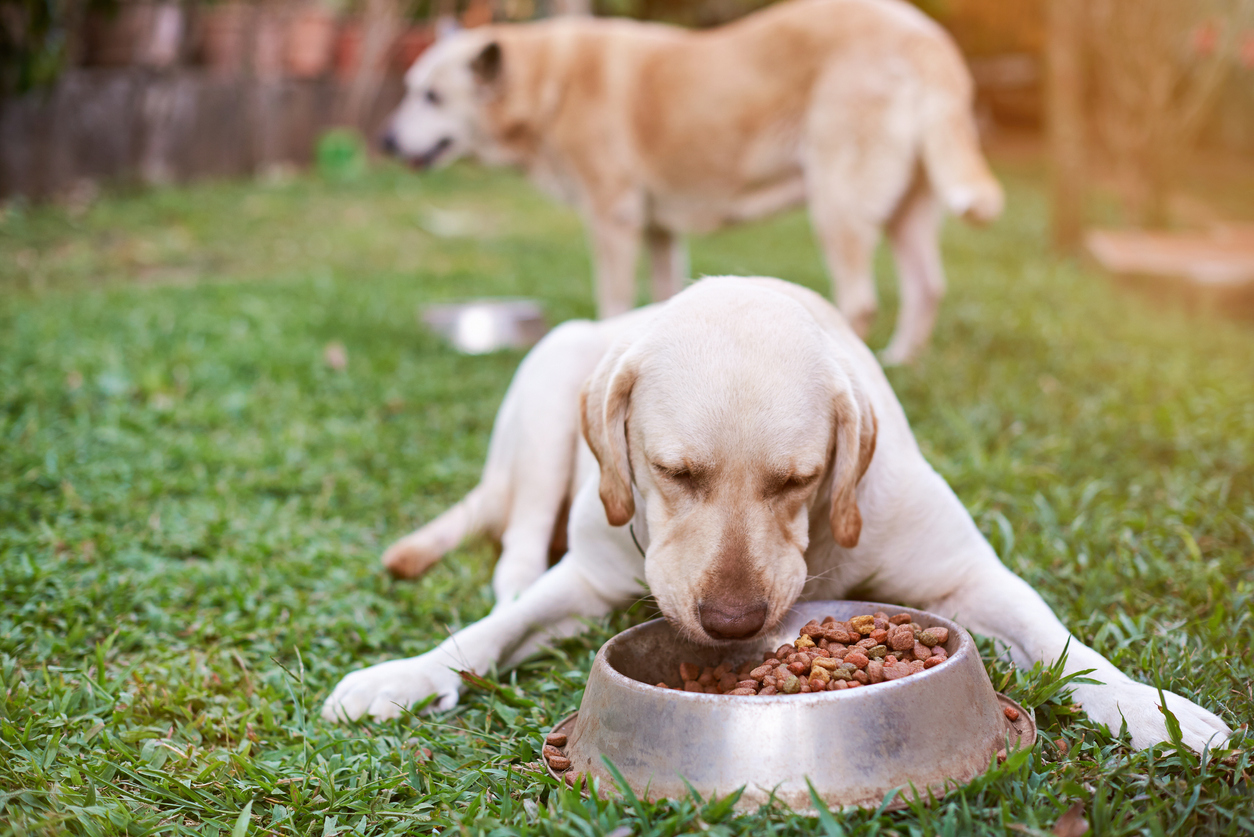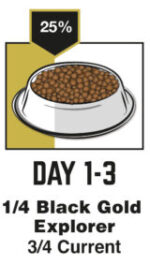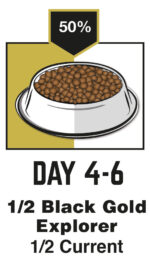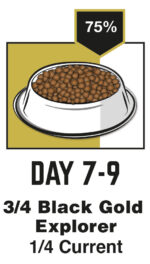Pro Tips for switching your dog’s formula

There are several reasons you may need to transition your dog to a new formula.
Age transitions, such as from puppy to adult or adult to mature, help make sure your dog’s diet has everything they need to maintain healthy body condition. Other health needs such as digestive, allergies, or skin and coat may be supported with a formulated diet and often require a formula transition. Slowly transitioning your dog to a new food can help support its digestive system and reduce the chance of common digestive issues associated with a change in diet.
Whatever the reason you need to transition your adventure companion’s fuel, we’ve got some pro tips to help avoid digestive issues and discomfort.
FIND A SIMILAR FORMULA
To make things easier when the time comes during one of your dog’s ages transitions such as puppy to adult or adult to mature, you may consider transitioning to a similar formula from the same brand. Making the transition within the same dog food brand will be easier on your dog as the formulation will be similar with nutritional needs changing to meet their specific life stage needs.
Sometimes you may be transitioning your dog’s food to address a specific health concern. When this happens, the change in ingredients is intended to serve your dog better. With any change, we recommend consulting your veterinarian to ensure the new formula will support your dog’s ideal body condition.
MAKE THE CHANGE GRADUALLY
Most dogs can’t stomach a complete, overnight change in food. They thrive on stability and structure and so do their guts. Helping them adjust with a gradual change avoids a total digestive disruption. When transitioning your dog to Black Gold Explorer dog food, substitute a small amount of your dog’s current food with Black Gold Explorer dog food. As shown in the chart below, gradually increase the amount of new food over a 10-day period.




There are many schedules that make the transition over a 7-day period. We recommend a slightly longer transition to make things easier on your dog’s digestive system. If your dog has a sensitive stomach, consider extending the transition period.
KEEP AN EYE OUT FOR EATING HABITS
If a formula transition isn’t going well, your dog will let you know. Dogs that begin to avoid their food are likely communicating that the transition is happening too fast. To help them simply slow down and add the new food more gradually.
Another sign your dog may be struggling with the transition is digestive issues. Be on the lookout for diarrhea. This is a sign that their gut isn’t quite keeping up with the transition. It’s best to switch back to their normal food until the stool returns to normal if this happens. The next time you attempt to transition, plan to do it a little slower.
Some dogs will have an easier time with formula transitions than others. The most important part of any transition is making sure your dog has the nutritional support they need every step of the way.
At Black Gold Explorer, we’re here to make sure your dog is fueled for life. Formula transitions are a big part of that. Learn more about our age specific and health specific formulas here.
